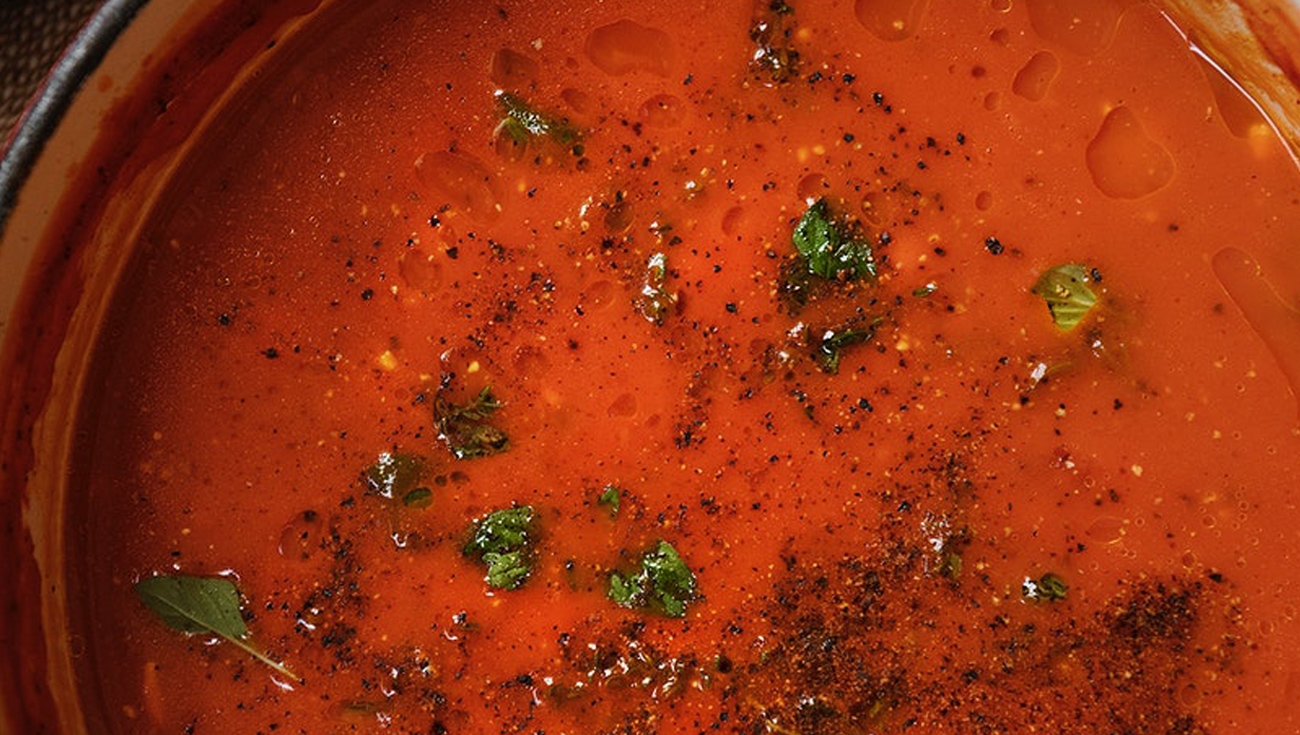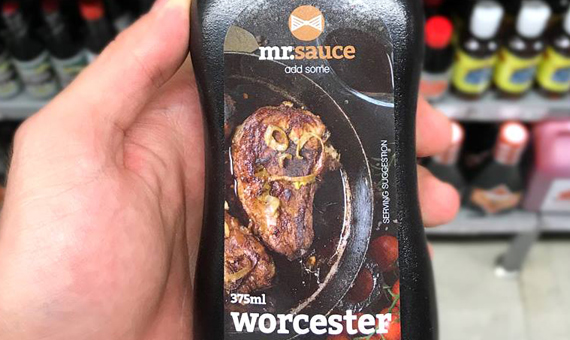We often get asked “what is the difference between Tomato Ketchup and Tomato Sauce?”, so we thought we would delve a little deeper and give you a little history on their origins, how they began and how they’ve transformed today. Whilst they may be used interchangeably, the taste differences may not be too clear-cut – unless you’re a bit of a connoisseur – so we hope a bit of informed reading will guide you.
In simple terms, as it relates to the Mr Sauce products, Tomato Ketchup is a superior, more complex, tomato-based sauce prepared with a selection of premium spices and a higher tomato paste content than its simpler cousin. Tomato Sauce, on the other hand, is simply a blend of tomato paste, vinegar, sugar, and salt. And, because we like to do things well, we add a few spices for good measure!
When you unpack the history of these two products, things start getting interesting.
Tomato Sauce, where it all began
Tomato Sauce, as we refer to the sweet and sour tangy red sauce in most parts of the world, including Europe and the Americas, is completely different from what we know. If you were to ask for Tomato Sauce in Italy (and you weren’t met with a puzzled stare) you would be served a savoury “pasta sauce” made of chopped tomatoes, olive oil and herbs. There, like in many parts of the world, they only know “tomato ketchup”, being the sweet and tangy condiment that accompanies your burger and chips.
Italians are famous for their pasta dishes, so you’d be forgiven for thinking that they invented the tomato sauce – but you’d be mistaken! According to the writings of a 15th century Franciscan Friar, Bernardino de Sahagún, the markets of Tenochtitlan (Mexico City today) sold a prepared tomato sauce usually containing peppers, pumpkin seeds, tomatoes, green peppers and fat tomatoes – making Mexico the source of the sauce, if you will.
When was Tomato Sauce first introduced?
In a detailed tomato history, a 1747 cookbook (by pastry chef Juan de la Mata) contains one of the first known Tomato Sauce recipes, a brewed tomato salad. It goes as follows:
“After roasting three or four tomatoes, and clean from their skin, they will be chopped on a table as often as possible, put in their sauceboat a little parsley, onion and garlic will be added, also chopped, with a little salt, pepper, oil and vinegar, that everything well mixed, and incorporated, can be served.”
Other common ingredients that have been incorporated over time and across geographical zones include stock, wine, chilli peppers, basil, oregano, parsley, black pepper, and sometimes even a bit of ground meat.

Catching up, on Ketchup
And we’ll bet that you think Tomato Ketchup is an American thing, right? After all, 97% of American households, according to National Geographic, report having a bottle on their table.
The origins of Ketchup are even more bizarre than the facts about tomato sauce. Especially when you learn that the original “ketchup” (or kê-chiap) was actually made from fermented fish, first introduced to the world by the Chinese in the 17th century. The word kê-chiap literally means the ‘brine of pickled fish or shellfish’.
English colonists first discovered it in the 18th century in the Malay States (now Malaysia and Singapore) and took it across to the Americas with them.
The recipe for ketchup (or “catchup/catsup” as it was referred to) evolved, and in England the use of mushrooms and walnuts as the main ingredient became dominant. There were a number of other weird and wonderful ingredients, including egg whites, oysters, mussels and even grapes used in the early concoctions.
The world’s first (documented) Tomato Ketchup recipe (1817)
It was only in the 19th century when tomatoes were added to ketchup, bringing to life the first tomato ketchup, in this intriguing recipe for “Tomata Catsup”. It was published as follows:
- Gather a gallon of fine, red, and full ripe tomatas; mash them with one pound of salt.
- Let them rest for three days, press off the juice, and to each quart add a quarter of a pound of anchovies, two ounces of shallots, and an ounce of ground black pepper.
- Boil up together for half an hour, strain through a sieve, and put to it the following spices; a quarter of an ounce of mace, the same of allspice and ginger, half an ounce of nutmeg, a drachm of coriander seed, and half a drachm of cochineal.
- Pound all together; let them simmer gently for twenty minutes, and strain through a bag: when cold, bottle it, adding to each bottle a wineglass of brandy. It will keep for seven years.
American cooks only started sweetening tomato ketchup in the 19th Century, and the first person credited with bottling and selling it commercially, back in 1837, was Jonas Yerkes. F & J Heinz – yup, THAT Heinz – launched their now famous tomato ketchup in 1876. The commercial production of tomato ketchup called for better preservation and so more sugar was added. With that, we’ve come to know tomato ketchup to be a sweet and sour condiment.
So there you have it, two fascinating histories of two of the world’s favourite condiments. Now you know ALL about ‘T Sauce’, ‘Tommy K’, ‘Red sauce’, or as one of our youngest fans have dubbed it – “Dip dip”.
These centuries-old sauces have evolved and certainly improved over the years; with 12,850 kg of Tomato Ketchup and 14,763 kg of Tomato Sauce being produced in our factory each month, we’re also still learning ourselves.
Aren’t you glad that we‘ve taken on the task of preparing these for you, with less sugar and more tomato, so that you don’t have to do it yourself?
What are the main differences that come to mind when you think of the two condiments? Drop them in the comments below.
The moment your tummy grumbles you are enticed by your brain to fill it up, why not treat it with something classic like spaghetti and meatballs, or a meatball sub if you are on the go.
Everybody loves meatballs, so much so that each nation has there own kind of meatball, often made with various combinations of beef, lamb and/or pork: Sweden – köttbulle, Spain – albóndigas, Netherlands – gehaktballetje, Greece – keftedes, South Africa – frikkadels, and from India through to the Middle East – kofta, just to name a few!
We reached out to a lady with an epicure – a kitchen guru, if you may – Princess Tafadzwa to get her take. She has her own website featuring some of the most delicious traditional recipes that Zimbabweans will love, from mouth-watering desserts, side dishes, and appetizers, to kitchen how-tos.
Follow her recipe below as she remixes the tried and tested ‘traditional’ meatball by adding some, once again proving once you go Mr.Sauce, there is no turning back!
Ingredients
- 1 lb ground beef
- 2 eggs beaten
- 1/2 cup milk
- 1/2 cups grated parmesan cheese
- 1 slice bread cut up
- 1 small onion minced
- 2 garlic cloves minced
- 1/2 teaspoon oregano
- 1 teaspoon salt
- fresh ground pepper
- 1/4 cups minced fresh basil
- 1 cup Mr. Sauce Sticky BBQ Basting sauce
Instructions
- Mix all ingredients with hands except for the sauce
- Form into golfball-sized meatballs
- Bake at 350 degrees for 30 minutes
- Cover the meatballs in sauce and bake for another 20 minutes
- Serve warm.

Whilst Princess’s recipe uses 100% pure beef to make her delicious meatballs, the most common ratio used for making meatballs is 75% beef and 25% pork. The fat from the pork binds the meat nicely and adds a buttery note. Many people find pork more flavourful and, often, it’s a lot more budget-friendly! Another alternative, people tend to add bread/breadcrumbs to make the serving size bigger. It’s all up to you at the end of the day.
Do you have any meatball-making tips? Leave them in the comments below.
For more mouth-watering meals that are easy to prepare at home, visit Princess Tafadzwa’s website, or head over to our recipe page. If you never want to miss a recipe or cooking tip, follow us on Facebook and Instagram.
Before we divulge on the Mr. Sauce launch into retail and which supermarket you can find us in, let’s rewind the clock a bit.
Efoods began its sauce journey in 2012 when the company diversified from manufacturing single-serve sachets and incorporated a bulk (5 litre) manufacturing division.
This was all new territory as previously, the ready-made sauce was packed into sachets. Now the process began from scratch, manufacturing the sauce from our own homegrown recipes, devised by a new in-house food scientist. Through a process of refinement and iteration (and A LOT of tastings!) we found the flavour profile of tomato sauce we were looking for.
A thought occurred, “if we’re making tomato sauce, what else can we make?”.
The next logical step was to up the ante on the tomato paste, add additional herbs and spices. Voila! We have our own ketchup! The experimentations continued and soon enough Efoods had cooked up a new brand, Mr. Sauce.
After finalising formulas and signing off on flavours, we expanded on the success of the bulk sauces and incorporated 1 and 2 litre variations.
Where are you launching Mr. Sauce?
Fast forward to 2017 and you have a bit of an idea about our journey so far. It’s therefore with great pleasure that we announce our arrival on the retail scene and the launch of Mr. Sauce, you can now find one of our specially designed 375ml bottles at TM / Pick n Pay Zimbabwe!

With a little help from our friends at CarnaudMetalbox (now Nampak) we have a signature curvy bottle standing tall on the shelf, not only beautiful to look at but, also easy to hold.
Keep following our Facebook page to be the first to hear about new supermarkets and locations as they are rolled out.
You can also get in touch to place an order directly here.